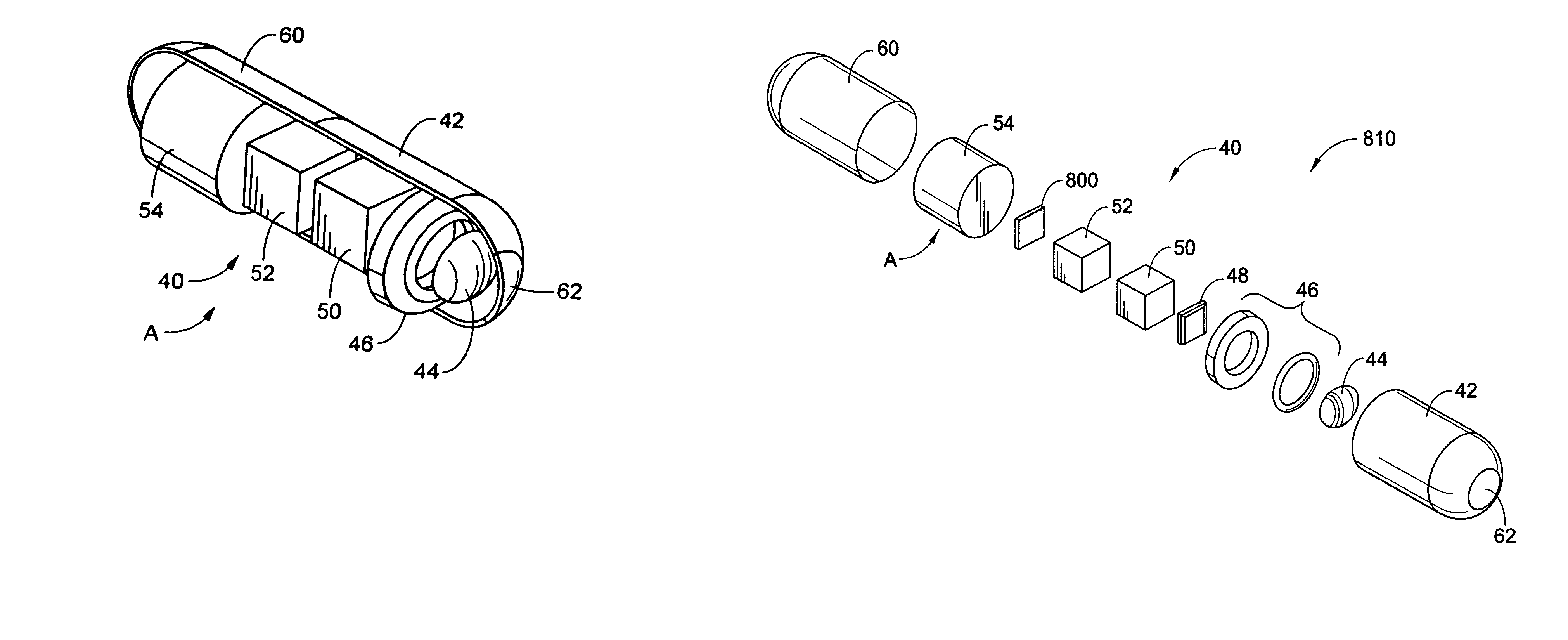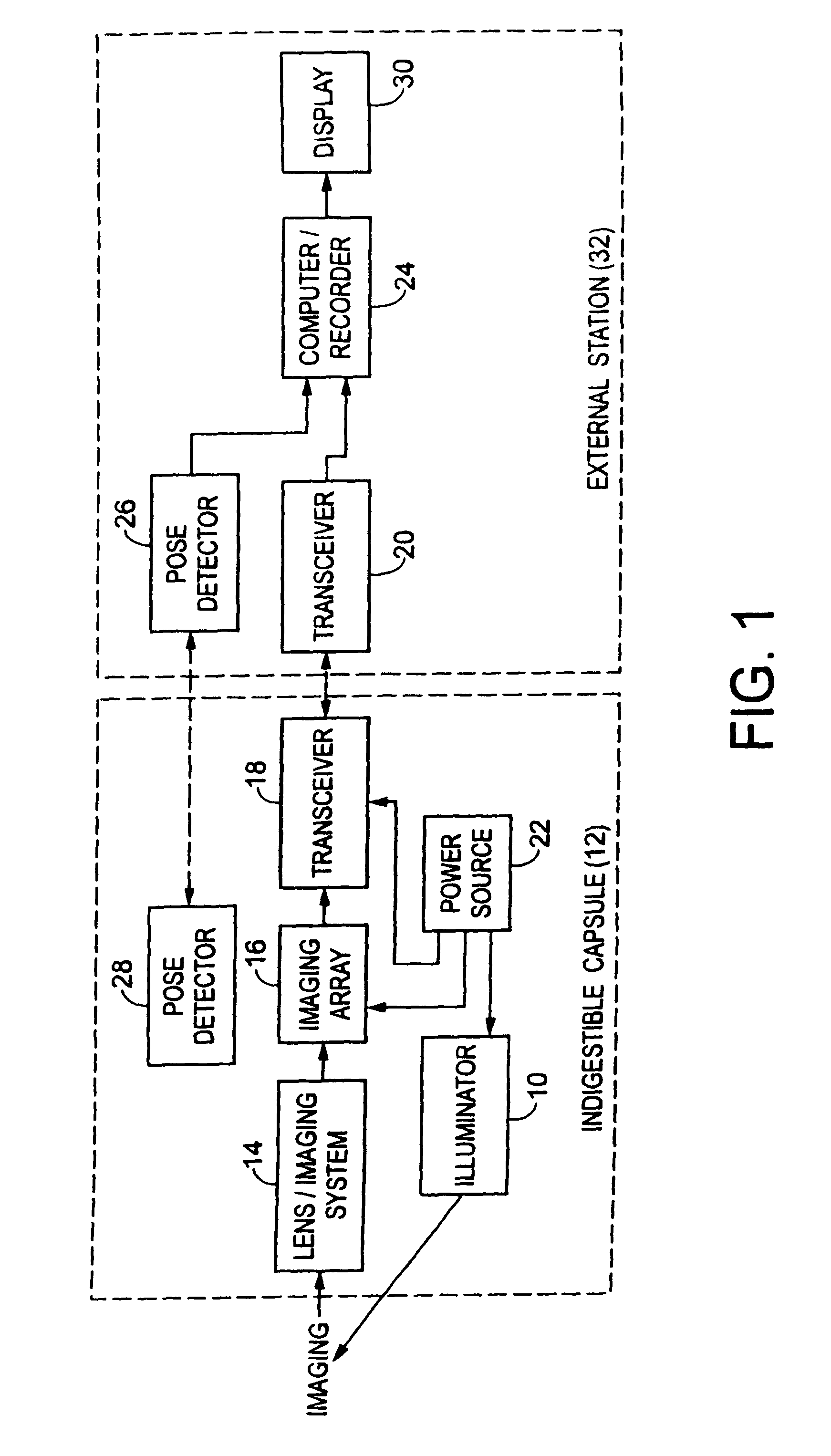Miniature ingestible capsule
a capsule and miniature technology, applied in the field of miniature ingestible capsules, can solve the problems of low treatment cost, health care population at risk of invasive procedure, and inability to perform colorectal cancer screening for the vast majority of the population, so as to improve or enhance visualization
- Summary
- Abstract
- Description
- Claims
- Application Information
AI Technical Summary
Benefits of technology
Problems solved by technology
Method used
Image
Examples
fourth embodiment
[0087]Referring now to FIG. 6, wheels 140 may be added to the capsule 150 in accordance with the present disclosure. The capsule may be one of the three embodiments previously described. The wheels would be powered by a remote control device (not shown). The wheels 140 would have spokes 142 which would provide friction and enable the wheels to move along surfaces. The capsule with wheels would be used primarily for situations where the stomach is virtually dry, not fluid filled; such as a result of the patient fasting. Two sets of four wheels 140 equally spaced may be placed around the circumference of the capsule. Also, the capsule with wheels may be used in addition to a second capsule. The capsule with wheels may provide a therapeutic function instead of a diagnostic function. That is, the capsule may supply medicine or perform another therapeutic function to the area being investigated by the second capsule. One capsule would not be able to detect the area being investigated thr...
fifth embodiment
[0088]In the situation where the stomach is at least partially fluid-filled, fins 160 in lieu of wheels may be placed on the exterior surface of capsule 170 as illustrated in a fifth embodiment in FIG. 7. The fins 160 would aid the capsule in moving throughout the stomach.
sixth embodiment
[0089]In a sixth embodiment, referring to FIG. 8, prongs 180 would extend from posterior end 182 of capsule 184. The prongs 180 can be retractable and would serve as a base for the capsule to effectively anchor or stabilize the capsule. A laser or biopsy forceps (not shown) could extend from the anterior portion 186 of the capsule.
PUM
 Login to View More
Login to View More Abstract
Description
Claims
Application Information
 Login to View More
Login to View More - R&D
- Intellectual Property
- Life Sciences
- Materials
- Tech Scout
- Unparalleled Data Quality
- Higher Quality Content
- 60% Fewer Hallucinations
Browse by: Latest US Patents, China's latest patents, Technical Efficacy Thesaurus, Application Domain, Technology Topic, Popular Technical Reports.
© 2025 PatSnap. All rights reserved.Legal|Privacy policy|Modern Slavery Act Transparency Statement|Sitemap|About US| Contact US: help@patsnap.com



